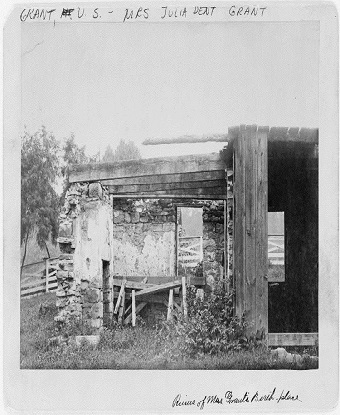Last updated: August 3, 2020
Person
Mary Robinson

Library of Congress
Mary Robinson was an enslaved laborer at the White Haven plantation in St. Louis, Missouri. Upon Ulysses S. Grant's death on July 23, 1885, she participated in a long interview with the St. Louis Republican and discussed Ulysses and Julia Grant's life at White Haven. This interview provides crucial insights into General Grant's character and has been frequently cited by historians of biographers studying Grant's life.
Robinson was born around 1827 or 1828. She may have been born at the White Haven plantation and stated that "I lived with with the Dent family [at White Haven] from my childhood." Initally a playmate of Julia Dent Grant during her early youth, Robinson eventually became a cook at White Haven and was tasked with feeding the Dent and Grant families along with the enslaved laborers living on the property. The Dent family's origins in Maryland apparently played a role Robinson becoming well-versed in cooking seafood dishes. Julia Dent Grant made special mention of Robinson's cooking in her personal memoirs. "Mammy, Black Mary, was an artist. Such loaves of beautiful snowy cake, such plates full of delicious Maryland biscuit, such exquisite custards and puddings, such omelettes, gumbo soup, and fritters--these were mammy's specialty."
The nature of Robinson's journey to freedom is unknown, but she may have been one of several enslaved African Americans who ran away from White Haven during the Civil War around 1864. After the war she decided to stay in St. Louis and worked as a laundress. Her address in the 1885 interview was listed as 3305 Caroline Avenue, located in west St. Louis near the present-day boundaries of St. Louis University. She was described in the interview as "a highly intelligent, copper-colored Negress . . . nearly 58 years of age."
Although the journalist who edited Robinson's interview left out any recollections of her own experiences at White Haven, she did speak at length about Ulysses Grant's character. During the interview she described Ulysses as "an exceedingly fine looking man" who was "very fond of domestic animals" and "one of the greatest readers I ever saw." She also recalled a humorous moment when Grant's dog, Leo, captured chickens on the White Haven property that were then used for cooking meals on the property.
To read the entire interview with Mary Robinson, click here.
